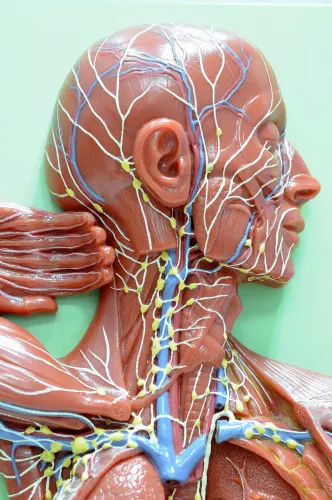Radiology Coding Alert
Prep Now for These Crucial Additions and Changes to the Sepsis ICD-10-CM Guidelines
Consider this assortment of new and revised rule changes, sure to affect your radiology practice. This time of year offers coders a multi-month window to get caught up on all the various changes to the ICD-10-CM and CPT® manuals. However, there’s one area of equal importance that coders are notorious in neglecting in their haste of getting caught up on all the new codes — the guidelines. “While becoming familiar with the annual changes to specific ICD-10-CM codes is important, it is equally important to review the coding guidelines for additions, revisions and deletions,” says Amanda Corney, MBA, medical billing operations manager for Medical Resources Management in Rochester, New York. In this issue, you’ll be covering each of the most fundamental changes on sepsis coding that are sure to have a profound impact on the way you address various diagnostic scenarios. From the sequencing of sepsis diagnoses to knowing when to use additional codes, this year’s new and revised set of ICD-10-CM sepsis guidelines is sure to affect the radiology specialty, among many others. Dive in for a closer look at all the most important sepsis changes to the 2019 ICD-10-CM guidelines. Look Out for New Code Sequencing Instructions The first guideline worth noting is a subtle one, but offers important additional instruction to the postprocedural sepsis guidelines in Section I.C.1.d (Sepsis, Severe Sepsis, and Septic Shock). Note the new guidelines in bold: In addition to some semantic changes, you’ll want to take specific note of the instructions on the sequencing of codes. First, you will select one of the appropriate codes listed above to report the underlying postprocedural infection. Next, you will either report T81.44- (Sepsis following a procedure) or O86.04 (Sepsis following an obstetrical procedure) depending on the patient’s surgical status. Next, you will report a third code to identify the infectious agent. Finally, you will report a code from R65.2- (Severe sepsis) if the patient has documented severe sepsis. Consider This Entirely New Postprocedural Infection Policy Within the same set of guidelines, the ICD-10-CM manual offers one entirely new rule regarding postprocedural infections following infusion, transfusion, therapeutic injection, or immunization: One important point to note with this guideline is that there is no instruction that you should report postprocedural sepsis codes T81.44 or O86.04 as secondary diagnoses, if applicable. Instead, you should only report R65.2 if the physician documents severe sepsis. Coder’s note: Most of the codes referenced are new as of 2019, so be sure to brush up on all the guidelines that are affected by the plethora of new diagnosis codes. Note More Sequencing Guidelines for Sepsis, Septic Shock Diagnoses The last guideline to note under Section I.C.1.d pertains to a revision to the postprocedural infection and postprocedural septic shock coding guidelines: » As you can see, ICD-10-CM almost completely overhauls their prior guidelines on postprocedural infection and septic shock coding. For a patient experiencing postprocedural septic shock following an infection, ICD-10-CM first instructs you to follow by the guidelines listed above. Unfortunately, ICD-10-CM does not elaborate any further, but it’s to be assumed that you will report each diagnosis in the following order: Refresher: Abiding by these new sepsis guidelines requires a firm knowledge of what constitutes a sepsis versus septic shock diagnosis. “The ICD-10-CM official guidelines on sepsis explain it best: ‘Septic shock generally refers to circulatory failure associated with severe sepsis, and therefore, it represents a type of acute organ dysfunction,’ whereas sepsis is a systemic responseto infection,” relays Stephan Tong, CPB, CPC, COC, revenue cycle management freelancer at stongrcm.com. “Septic shock occurs when septic infection of the bloodstream has become so severe that the patient will fall into a very dangerous hypotensive state,” explains Tong.
A Do not assign code for the systemic infection R65.21, Severe sepsis with septic shock. Additional code(s) should also be assigned for any acute organ dysfunction.”
Related Articles
Radiology Coding Alert
- CPT® Coding:
Take this CPT® Assistant Advice, Code Facet Joint, Epidural Injection Services with Ease
Consider factors such as site, level, and use of imaging when determining code. In Volume [...] - ICD-10-CM Coding:
Don't Worry About Miscoding This Parenthetical Note Conundrum Ever Again
Use this Q&A from the Coding Clinic as your guiding resource. This month, you’ll tackle [...] - ICD-10-CM Guidelines:
Prep Now for These Crucial Additions and Changes to the Sepsis ICD-10-CM Guidelines
Consider this assortment of new and revised rule changes, sure to affect your radiology practice. [...] - You Be the Coder:
Try Combo Dx Before Reporting Influenza, Condition Separately
Question: A computed tomography (CT) scan is performed on a patient with a chronic middle [...] - Reader Question:
Use ICD-10 Coding Notes in the Appropriate Context
Question: At the beginning of the J section in the ICD10-CM manual, there is a [...] - Reader Question:
Note Physician Requirements for 38792 Reporting
Question: If the provider performs a 38792 by the nuclear medicine technologist, and then sends [...] - Reader Question:
Don't Report 75809 Without Documentation of Contrast
Question: Which code would you use for a “shunt series” ranging from two to five [...]




